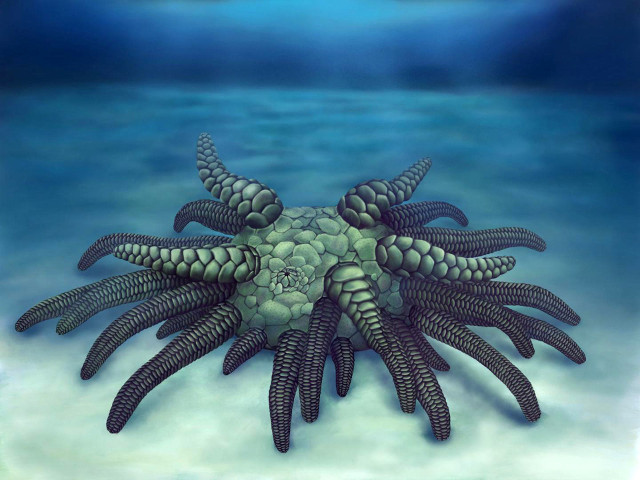
An article published in the journal “Proceedings of the Royal Society B: Biological Sciences” reports the discovery of a species related to the animals of the class Holothuroidea, the ones commonly known as sea cucumbers, which was named Sollasina cthulhu for a certain resemblance to the creature invented by the writer H.P. Lovecraft. A team of researchers examined very well preserved fossils discovered in the English site of Herefordshire dating back to about 430 million years ago, during the Silurian period, using modern technologies to create a 3D reconstruction.
The site of Herefordshire is a deposit of fossils dating back to the Silurian period of excellent preservation, which sometimes also include soft tissues that generally decompose after the animal’s death and require special conditions that block or at least limit their decay to enable their fossilization. Thirteen specimens of the animal later named Sollasina cthulhu were discovered at that site and one of them was chosen for a more detailed study.
The team led by Dr. Imran Rahman of the Oxford University Museum of Natural History (OUMNH) divided the chosen specimen into seven parts that were sliced into 30 micrometer-thick slices photographed with a Leica digital camera connected to a Wild binocular microscope. The images of the slices were assembled into a virtual 3D model. This result not only allows to better study this animal’s physical characteristics but also to obtain information that are useful to understand its relationships with living species.
This animal was equipped with a series of 45 tentacles that made it similar to the most famous of the Great Old Ones invented by the writer H.P. Lovecraft and for this reason it was decided to name it Sollasina cthulhu. However, this species attributed to the Ophiocistioidea class of the echinoderm phylum was really small since the fossils have a length of about 3 centimeters. In short, they could only frighten some other tiny sea creature.
A complex comparison with species belonging to 26 different taxa was made to try to establish the relationships between Sollasina cthulhu and today’s animals such as sea cucumbers but also sea urchins. According to the results there’s a closer relationship with sea cucumbers despite some morphological characteristics closer to those of sea urchins.
Sollasina cthulhu arouses curiosity for its appearance and the name the species was given but from the scientific point of view it’s interesting because it provides information on an extinct class of animals that lived in the Silurian period. Such ancient fossils of these animals are limited and the reconstruction of the evolution of the entire phylum is definitely limited. Sites like Herefordshire are a treasure trove for paleontologists since any finding of fossils in excellent condition can lead, with the help of modern technologies, to a leap forward in our knowledge of organisms that lived 430 million years ago and how they evolved in more recent species.

